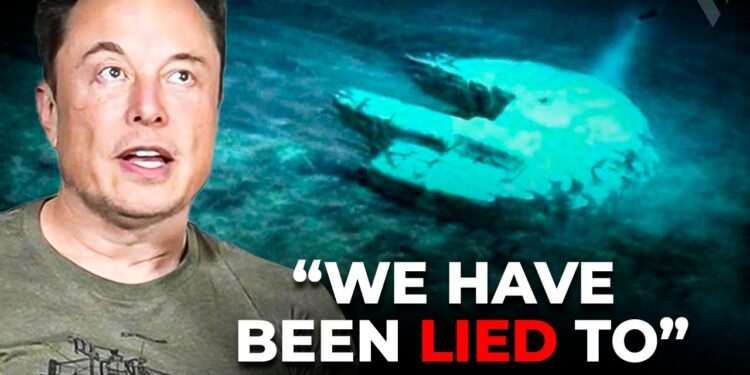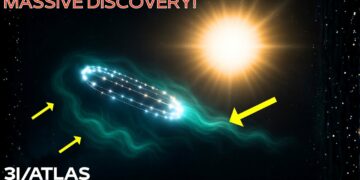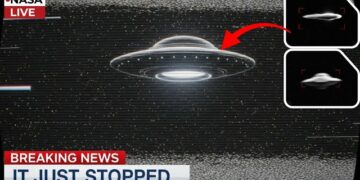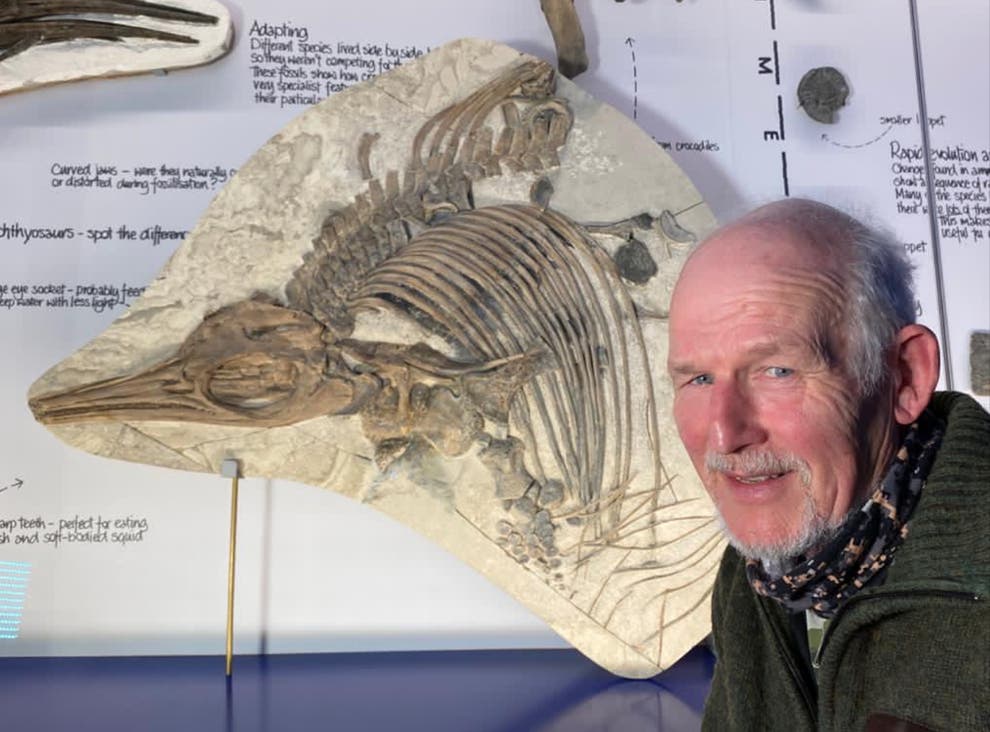Beneath 600 meters of ice lies a critical discovery. While still waters run deep, the ocean waves hold bizarre secrets. Earth’s waters are vast and mysterious, so it’s no surprise that explorers have uncovered strange phenomena. Previous studies suggested the cold, nutrient-poor depths beneath Antarctic ice shelves couldn’t sustain much life. However, a new study, highlighted by Elon Musk, challenges this by revealing a colony of animals on the seafloor—creatures that shouldn’t be alive there. This groundbreaking find, captured on record, has researchers scrambling for answers. What did they discover in the ocean’s depths, and why is it so significant? Join us as we explore this impossible Arctic discovery.
In 1958, a U.S. submarine made history by traveling beneath the ice to reach the North Pole, becoming the first craft to do so. This mission opened a new world for scientists to investigate. Today, nuclear-powered submarines, armed with torpedoes and missiles, are stealthy tools of deterrence, capable of months-long missions. The UK, for example, has maintained at least one nuclear-armed submarine at sea since 1969. The 1958 mission was also a scientific milestone, paving the way for exploration of the Arctic’s unique environment. It tested the military potential of nuclear submarines while providing the Navy and scientists with new insights into the Arctic Ocean’s conditions. Submarines grant access to this hostile environment, helping us understand its present and future state.
Antarctica, the coldest continent, holds countless mysteries. Beneath its ice and seas lies a treasure trove of strange anomalies waiting to be uncovered. Despite its isolation and harsh climate, the Filchner-Ronne Ice Shelf, a five-hour flight from the nearest outpost, is far from simple. Geologist James Smith of the British Antarctic Survey endured over three months of sub-zero temperatures, sleeping in a tent and eating dehydrated food during the southern summer. His goal was to collect seafloor sediment trapped under half a mile of ice to study the ice shelf’s history. The task was grueling—Smith and his team melted 20 tons of snow to produce 20,000 liters of hot water, poured through a borehole to reach the seafloor. After 20 hours of chipping away, they broke through the shelf and lowered a GoPro camera and sediment collector. The collector returned empty. They tried again—still nothing. In this environment, nothing is straightforward.
Later that evening, Smith reviewed the footage in his tent and noticed something extraordinary. The video showed a plunge through 3,000 feet of bluish-green ice, abruptly transitioning to the deep ocean and a light-colored silty seafloor—the sediment Smith sought. But something dark appeared 1,600 feet further: a boulder. The camera captured it as it fell face-first into the sediment, quickly righting itself to reveal something astonishing. The boulder hosted life—completely unexpected in this environment. Amid the mostly flat seafloor, this lone boulder stood out. By chance, Smith had drilled in the wrong spot.
Smith, not a biologist, shared the footage with colleague Hugh Griffiths of the British Antarctic Survey. Griffiths identified a microbial mat, a layer of microorganisms, coating the boulder. Cylindrical sponges, an alien-looking sponge, and stalked animals clung to its surface, alongside wispy filaments—possibly bacterial mats or hydroid animals. The nearest edge of the ice shelf, where open ocean and sunlight begin, is 160 miles away. The closest food source, where sunlight could support an ecosystem, is hundreds of miles away, with currents potentially carrying nutrients to these organisms. Life becomes less abundant further from open sea and sunlight, and current theories suggest that filter-feeding species, reliant on external food sources, would be among the first to disappear in such settings. Yet, these creatures defy expectations. “It’s not our place to tell life what to do, but it has no business being here,” Griffiths remarked. The unremarkable-looking boulder, in such an extreme location, is jaw-dropping.
This discovery raises countless questions: How did these organisms get there? What do they eat? How long have they been there? How common are such boulders? Are these species the same as those outside the ice shelf, or are they unique? If the ice shelf collapsed, what would happen to these communities? These animals live in complete darkness, like many deep-sea creatures, but immobile seafloor organisms typically rely on “marine snow”—organic debris sinking from above. In most Antarctic waters, productive seas support plankton, fish, and marine mammals, generating debris that becomes marine snow. However, these animals, beneath a mile of ice, lack access to such a food-rich water column and cannot move to find food. Griffiths suggests their food source may travel horizontally, with marine snow drifting sideways via currents from productive areas 390 to 930 kilometers away. This organic material, carried over vast distances, could sustain them.
Rich Mooi, a curator at the California Academy of Sciences, notes that Antarctic currents make this plausible. As seawater cools, it becomes denser, sinks to the ocean floor, and flows outward, driving global current systems. Inflowing water replaces it, carrying organic matter over hundreds of kilometers to feed these organisms and potentially introduce new species. However, without samples, researchers can’t confirm the sponges’ diet—some may filter organic debris, while others could be carnivorous, feeding on small creatures. Christopher Mah, a Smithsonian marine biologist, called this a “headline of the year”: killer sponges thriving in Antarctica’s dark, cold depths, where no life should survive.
The camera didn’t capture mobile species like fish or crustaceans, leaving it unclear if predators inhabit the area or if these sessile animals share nutrients. Another expedition is needed to answer these questions. The boulder’s location seems ideal—currents bring just enough food, sedimentation is light, and no predators appear to threaten them. Ripples in the surrounding sediment suggest currents deliver food from afar. How these immobile animals arrived remains unclear—did they spread locally from boulder to boulder, or did their parents, from thousands of kilometers away, release sperm and eggs to drift in currents? Antarctic sponges can live for centuries, suggesting this ecosystem could be ancient, with currents continually introducing new life.
Elon Musk and researchers can’t yet determine if this boulder is unique or if such ecosystems are common beneath Antarctica’s 560,000 square kilometers of ice shelves. Only a tennis-court-sized area has been explored via boreholes, so these communities may be widespread but undiscovered. This is the first recorded hard-substrate community deep beneath an ice shelf, defying prior hypotheses about life in such environments. The colony may be 1,500 kilometers from the nearest photosynthesis source, and without equipment to collect samples—a significant challenge—researchers can’t learn more.
Other organisms are known to survive on glacial melts or methane seep compounds. A hot-water drill uncovered a hidden ecosystem in an underground river beneath the Larsen Ice Shelf, 1,640 feet below the surface. Scientists found tens of thousands of amphipod crustaceans in a chamber discovered after spotting a groove in satellite imagery. A new map of the Southern Ocean, based on 1,200 sonar datasets, provides the most detailed view of Antarctica’s seafloor, including the Factorian Deep, discovered in 2019 at 24,400 feet—equivalent to 17 Empire State Buildings stacked. This map helps identify seamounts that could be marine life hotspots.
To answer these questions, scientists must interact closely with these animals and their environment, but time is running out. Global warming threatens these ecosystems, as collapsing ice shelves like Thwaites Glacier, dubbed the “Doomsday Glacier,” could destroy them. Underwater robots revealed Thwaites is barely clinging to the seafloor, with rapid ice loss and past retreats leaving parallel grooves. Climate-driven heat could trigger such melting again. This rock, hidden beneath half a mile of ice, faces an uncertain future.























